Curators are entitled to put whoever they can get (and the director is
willing to defend) in a show. I find it inconceivable, however, that a
Northwest curator would mount an animals-in-art exhibit that failed to
include Seattle’s Sherry
Markovitz.
Not in Rock Hushka’s The Secret
Language of Animals at the Tacoma Art Museum:
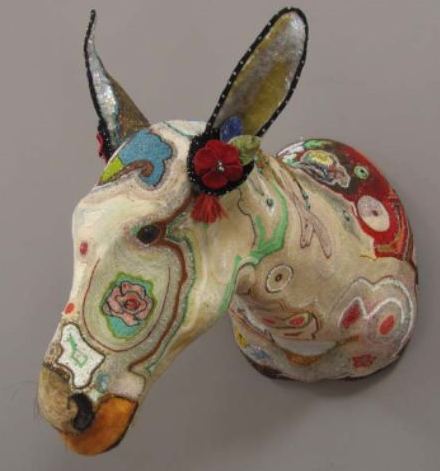 Encrusted over the
Encrusted over the
surface of Markovitz’s fiberglass molds, gourds and papier mache are
many
thousands of tiny glass beads woven into streams of colored light and
bordered with oil paint, leather and velvet, foil and nails, amulets and
jewels.
All that complexity becomes a simplicity in its realization.
Her sculptures are presences that come from time slowed down. Her deer
and bear heads aren’t trophies but relatives, linking us to all beings
who lean into light and live by breath.
In the Northwest on this
theme, she is too big to ignore. Ignoring her becomes a statement, and
that statement serves as the elephant in the room, invisible but
determinative, sour and eccentric.
Hushka’s exhibit is still a pleasure. (My review here.)
The more time I spent in it, however, the stronger became the
conviction that a good effort could have been a great one, given certain
additions and a lot of deletions. The exhibit wants to be all things to all
people. Hushka is too good a curator not to know that he padded in the
interests of popularity. A starker survey would give the exhibit’s core
samples a chance to reverberate in each other’s company.
First, almost everything made
before 1960 needed to go. In this show, contemporary art sets the tone.
With the sole exception of Audubon’s hand-colored engraving, Three-Toed
Woodpecker from 1832 (a perfect accompaniment to Justin Gibbens‘
present day riffs on it), the mostly modest art from earlier eras needs
its own space in another show. Most of these prints and small paintings function
as florid digressions in sentences that want to be muscular.
Second,
Joey Kirkpatrick and Flora C. Mace‘s eight cast glass sculptures from Bird
Pages are a dead spot where the ball won’t bounce, far from their
best work. One might have slipped by, but twelve?
Another big chunk that needed to go: Just say no to
the corny, fey, conventionally literal and the whimiscal.
Had the muscular been achieved, there are a few possible additions that could have augmented it, besides, of course, the essential Markovitz. The ones below would have been easy to get in Tacoma, not, in other words, the impossible dream.
TAM owns Scott
Fife‘s LeRoy, 2004. 118 x 78 x 120 inches, archival
cardboard, glue,
screws.
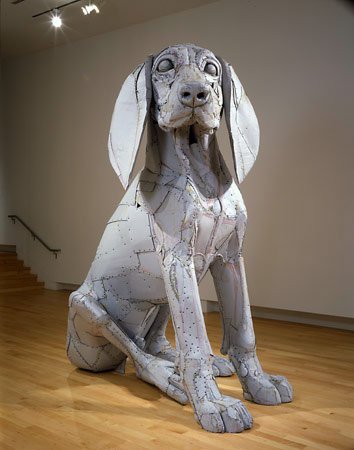 Of course it belongs
Of course it belongs
where it is, in the exhibit, but it would have been swell to offer a darker
side of Fife as well, something less ingratiating than the dog that
normally sits as a greeter in the lobby.
Wer
Wulf
25 x 25 x 34 inches, archival cardboard, glue, screws, 2007
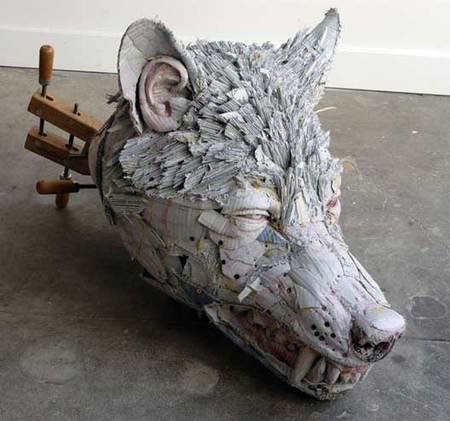 The
The
touch of the mythological would not have gone amiss.
Michael
Spafford The Iliad #19
woodcut, 2004
image 12 x 20″, paper size 19¾ x 26″
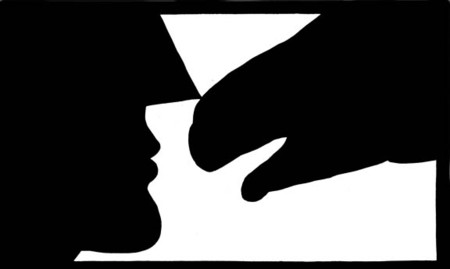 I
I
would have appreciated something from the heart of old Hollywood.
Grant
Barnhart, Elizabeth Taylor, acrylic on canvas, 12 x 12 inches
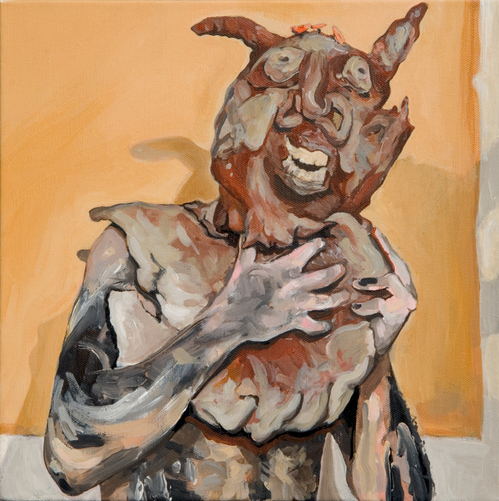 An animal-in-art exhibit is a good place to explore
An animal-in-art exhibit is a good place to explore
the anguish of
childhood.
Pat
De Caro, Toilet with Snake, oil/glassine, 2003 42 x 40″
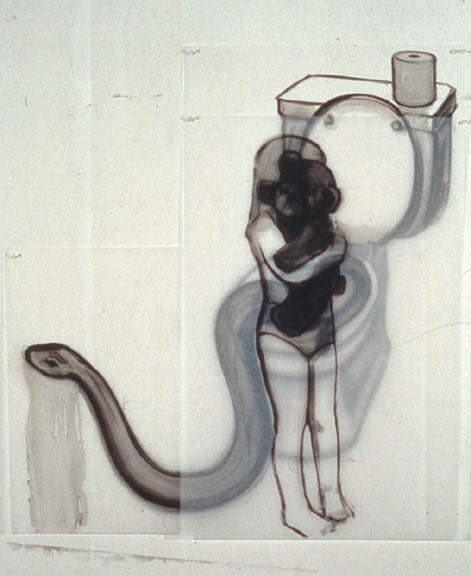 How about touching on the theme of the kinks in the Wild West?
How about touching on the theme of the kinks in the Wild West?
SuttonBeresCuller Beast of Burden II
2003
C-print on Sintra
18 x 24 inches
Edition of 5
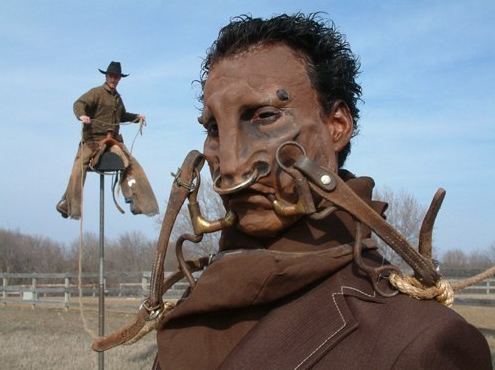 Every exhibit is a
Every exhibit is a
series of
moments. In great ones, the moments cohere into an overwhelming
conclusion. Hushka’s had the makings of great but settled for pleasing,
well below his capabilities.
Through June 27.



Leave a Reply